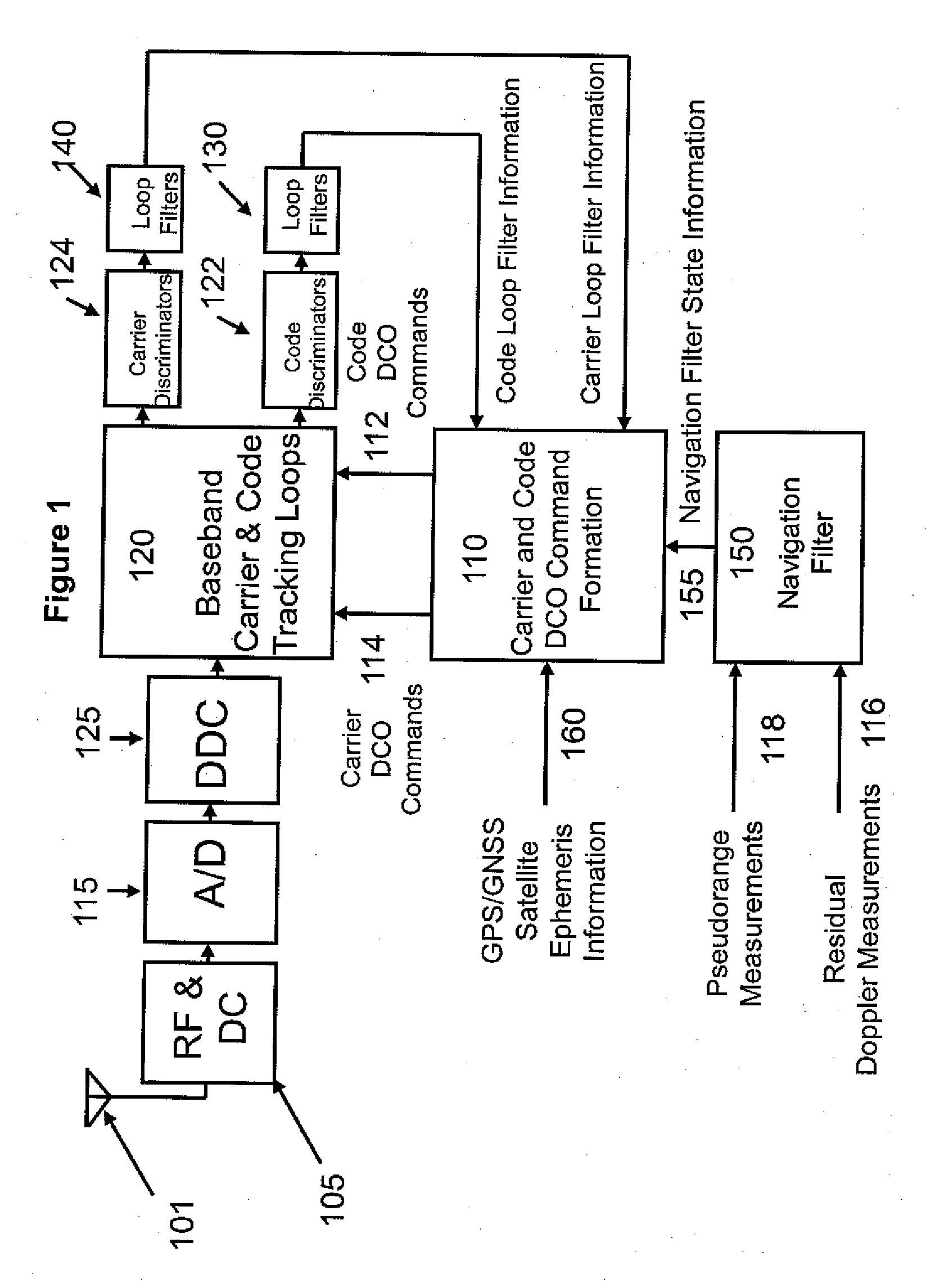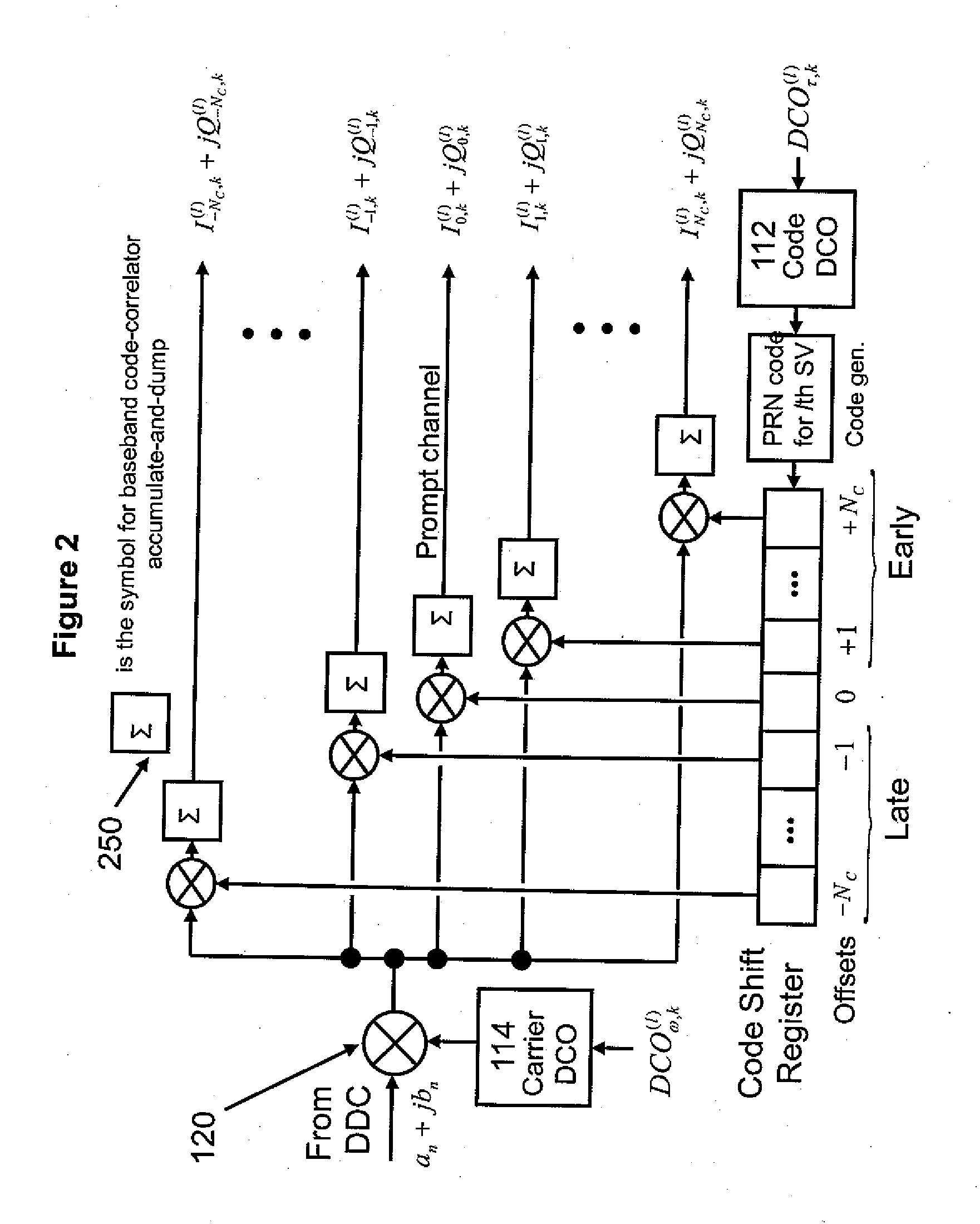High sensitivity gps/gnss receiver
- Summary
- Abstract
- Description
- Claims
- Application Information
AI Technical Summary
Benefits of technology
Problems solved by technology
Method used
Image
Examples
Embodiment Construction
[0021]FIG. 1 presents an overview block diagram of the High Sensitivity GPS Receiver (HSGR). It shows a typical GPS receiver RF front end 105 for GPS signals received at antenna 101. The received signal is downconverted to an intermediate frequency and digitized using an Analog-to-Digital (A / D) converter 115. The digitized signal is processed with a Digital Down Converter (DDC) 125, whose output signal is provided at baseband to the Digital Signal Processor (DSP) 120 for code and carrier tracking. The Digital Controlled Oscillator (DCO) commands 112 and 114 used in the DSP 120 for code and carrier tracking, respectively, are derived 110 using information from the conventional code loop filter 130 and carrier loop filter 140, the navigation filter state 155 output by the navigation filter 150, and the satellite ephemeris data 160 received by the HGSR from the satellite (SV).
[0022]A. Navigation Filter State Model and the Navigation Filter
[0023]The true HSGR navigation state (position,...
PUM
 Login to View More
Login to View More Abstract
Description
Claims
Application Information
 Login to View More
Login to View More - R&D
- Intellectual Property
- Life Sciences
- Materials
- Tech Scout
- Unparalleled Data Quality
- Higher Quality Content
- 60% Fewer Hallucinations
Browse by: Latest US Patents, China's latest patents, Technical Efficacy Thesaurus, Application Domain, Technology Topic, Popular Technical Reports.
© 2025 PatSnap. All rights reserved.Legal|Privacy policy|Modern Slavery Act Transparency Statement|Sitemap|About US| Contact US: help@patsnap.com



